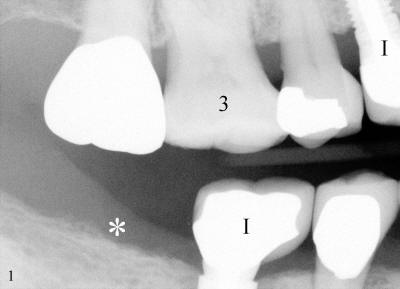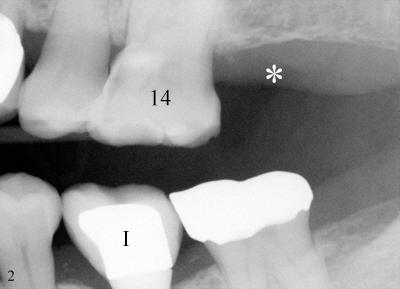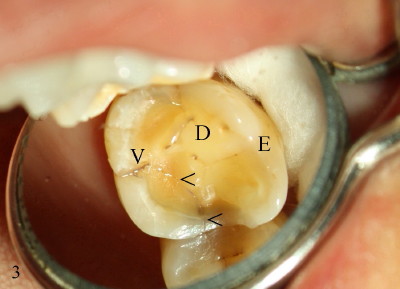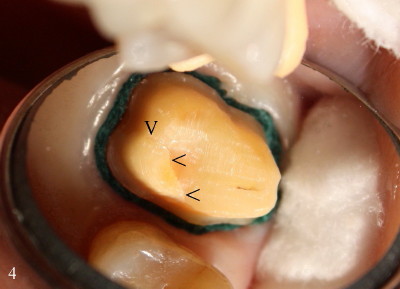



 |
 |
 |
 |
Dental Education Lecture: Care after Implant
Mrs. Wu is 66 years old. She has lots of dental work done, including three implants (I in Fig.1,2), but she still has two missing molars (*). So the teeth #3 and 14 are only two remaining molars, sustaining majority of chewing work in the mouth. Besides, their opposing teeth are implant-supported crowns. Implants are quite different from our natural teeth. Implants bind directly to bone, whereas between teeth and bone there is soft tissue, called periodontal ligament. The latter acts like a cushion. In contrast, when we chew with implants, they exert tremendous pressure (bang, bang, bang!). Either their own artificial crown may chip. Or their opposing teeth may break.
Unfortunately this happens to poor Mrs. Wu. One day she is enjoying special Chinese noodle soup. Unluckily, she bites on a small piece of bone in the soup. The tooth #14 cracks. She has excruciating pain.
Exam shows that the tooth has a lot of wear and tear (Fig.3). In the middle of the tooth is the yellowish dentin (D) without covering of enamel (E, whitish). Additionally, there are no normal structures a young molar should have, such as cusps and ridges. The most striking feature of this worn tooth is a distinct crack line (arrowheads). The crack line extends deep, visible after grinding for crown preparation (Fig.4). We are doing a crown to protect the tooth from extending crack into the nerve.
To prevent any further damage, Mrs. Wu should have two missing teeth restored, almost exclusively with implants. Bite force is even distributed. Second, the tooth #3 may need a crown. If Mrs. Wu does not like this idea, she should wear night guard so that there is no or low banging effect from implants while sleeping.
Xin Wei, DDS, PhD, MS 1st edition 04/13/2011, last revision 09/27/2012